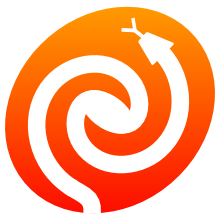An integrated development environment (IDE) is a software application that provides comprehensive facilities for software development. An IDE normally consists of at least a source-code editor, build automation tools, and a debugger. Some IDEs, such as IntelliJ IDEA, Eclipse and Lazarus contain the necessary compiler, interpreter or both; others, such as SharpDevelop and NetBeans, do not.
troff, short for "typesetter roff", is the major component of a document processing system developed by Bell Labs for the Unix operating system. troff and the related nroff were both developed from the original roff.

Wolfram Mathematica is a software system with built-in libraries for several areas of technical computing that allows machine learning, statistics, symbolic computation, data manipulation, network analysis, time series analysis, NLP, optimization, plotting functions and various types of data, implementation of algorithms, creation of user interfaces, and interfacing with programs written in other programming languages. It was conceived by Stephen Wolfram, and is developed by Wolfram Research of Champaign, Illinois. The Wolfram Language is the programming language used in Mathematica. Mathematica 1.0 was released on June 23, 1988 in Champaign, Illinois and Santa Clara, California.
In computer science, a preprocessor is a program that processes its input data to produce output that is used as input in another program. The output is said to be a preprocessed form of the input data, which is often used by some subsequent programs like compilers. The amount and kind of processing done depends on the nature of the preprocessor; some preprocessors are only capable of performing relatively simple textual substitutions and macro expansions, while others have the power of full-fledged programming languages.
A programming tool or software development tool is a computer program that is used to develop another program. A tool provides a command line interface (CLI), a graphical user interface (GUI), or both. A CLI allows a tool to be used for automation such as for build or test.

BRL-CAD is a constructive solid geometry (CSG) solid modeling computer-aided design (CAD) system. It includes an interactive geometry editor, ray tracing support for graphics rendering and geometric analysis, computer network distributed framebuffer support, scripting, image-processing and signal-processing tools. The entire package is distributed in source code and binary form.

RKWard is a transparent front-end to the R programming language, a scripting-language with a strong focus on statistics functions. RKWard tries to combine the power of the R language with the ease of use of commercial statistical packages.

The Starlink Project, referred to by users as Starlink and by developers as simply The Project, was a UK astronomical computing project which supplied general-purpose data reduction software. Until the late 1990s, it also supplied computing hardware and system administration personnel to UK astronomical institutes. In the former respect, it was analogous to the US IRAF project.
The Apple Developer Tools are a suite of software tools from Apple to aid in making software dynamic titles for the macOS and iOS platforms. The developer tools were formerly included on macOS install media, but are now exclusively distributed over the Internet. As of MacOS 14.6.1, Xcode is available as a free download from the Mac App Store.

CMake is a free, cross-platform, software development tool for building applications via compiler-independent instructions. It also can automate testing, packaging and installation. It runs on a variety of platforms and supports many programming languages.
The Space Telescope Science Data Analysis System (STSDAS) is an IRAF-based suite of astronomical software for reducing and analyzing astronomical data. It contains general purpose tools and packages for processing data from the Hubble Space Telescope. STSDAS is produced by Space Telescope Science Institute (STScI). The STSDAS software is generally in the public domain, however some routines were taken from the Numerical Recipes and other books and cannot freely distributed.
This is a comparison of notable free and open-source configuration management software, suitable for tasks like server configuration, orchestration and infrastructure as code typically performed by a system administrator.
Astronomical Image Processing System++ is a software package whose development was started in the early nineties, written almost entirely in C++, and which initial goal was to replace the by then already aging AIPS software. It has now been reborn as CASA and is the basis of the image processing systems for several next-generation radio telescopes including ALMA, eVLA, and ASKAP.

The Astronomical Image Processing System (AIPS) is a software package to support the reduction and analysis of data taken with radio telescopes. Developed predominantly for use with the then under-construction VLA, the generality inherent in its design allowed it to become the standard data-reduction package for most radio interferometers, including VLBI. Limited single-dish capability is also featured. Although partially replaced by CASA, it continues to evolve and remains in use.
The following outline is provided as an overview of and topical guide to the Perl programming language:

Astropy is a collection of software packages written in the Python programming language and designed for use in astronomy. The software is a single, free, core package for astronomical utilities due to the increasingly widespread usage of Python by astronomers, and to foster interoperability between various extant Python astronomy packages. Astropy is included in several large Python distributions; it is part of package managers for Linux and macOS, the Anaconda Python Distribution, Enthought Canopy and Ureka.
The following tables compare notable software frameworks, libraries, and computer programs for deep learning applications.









